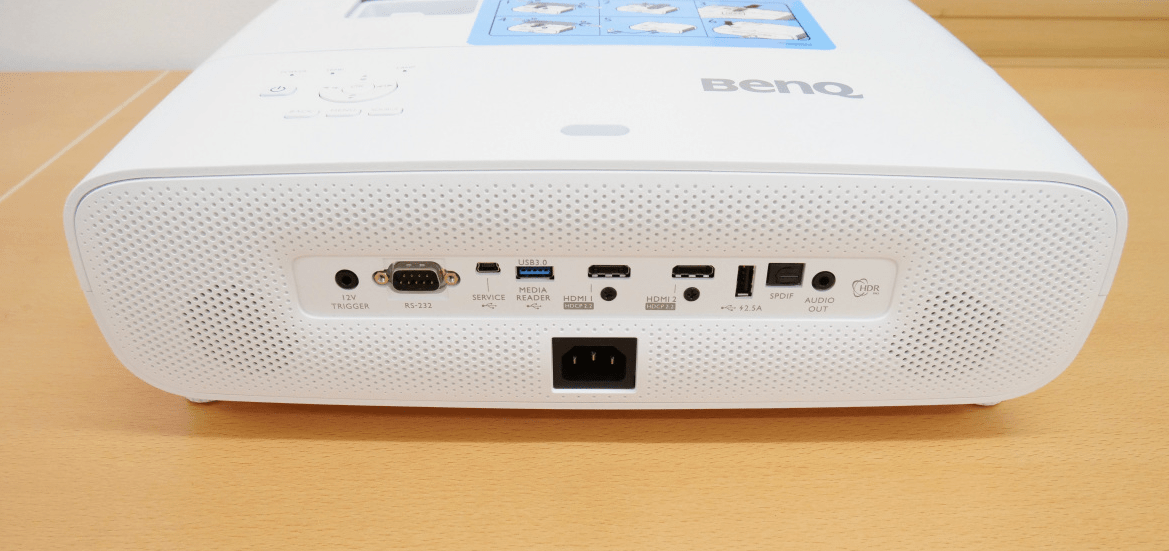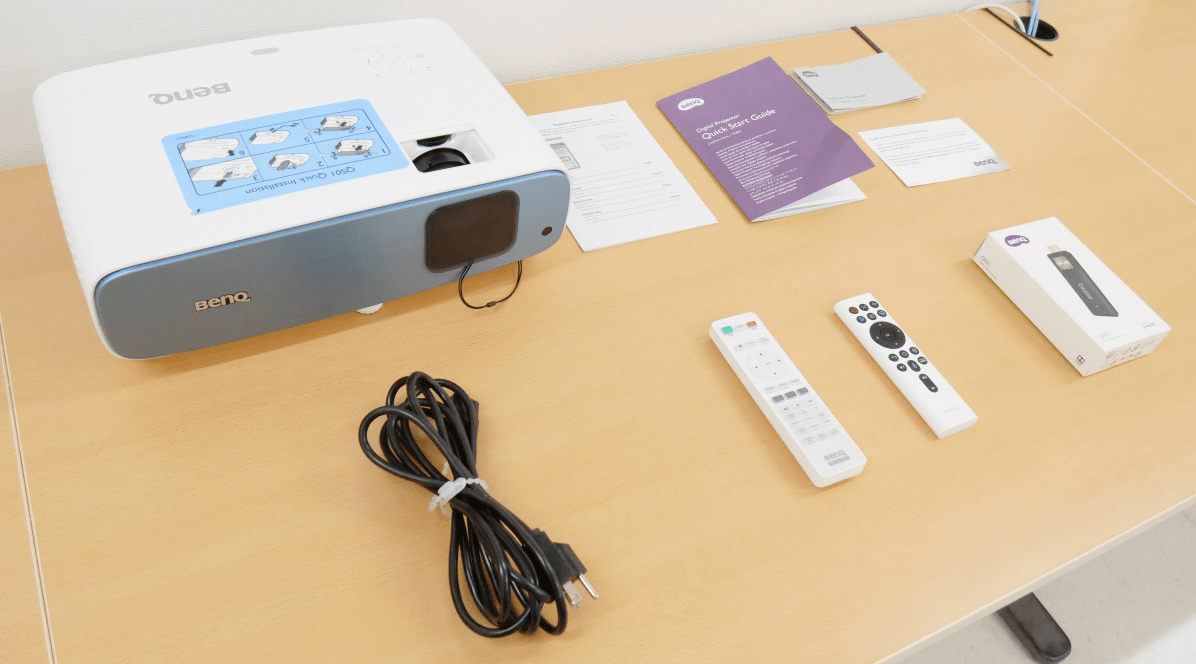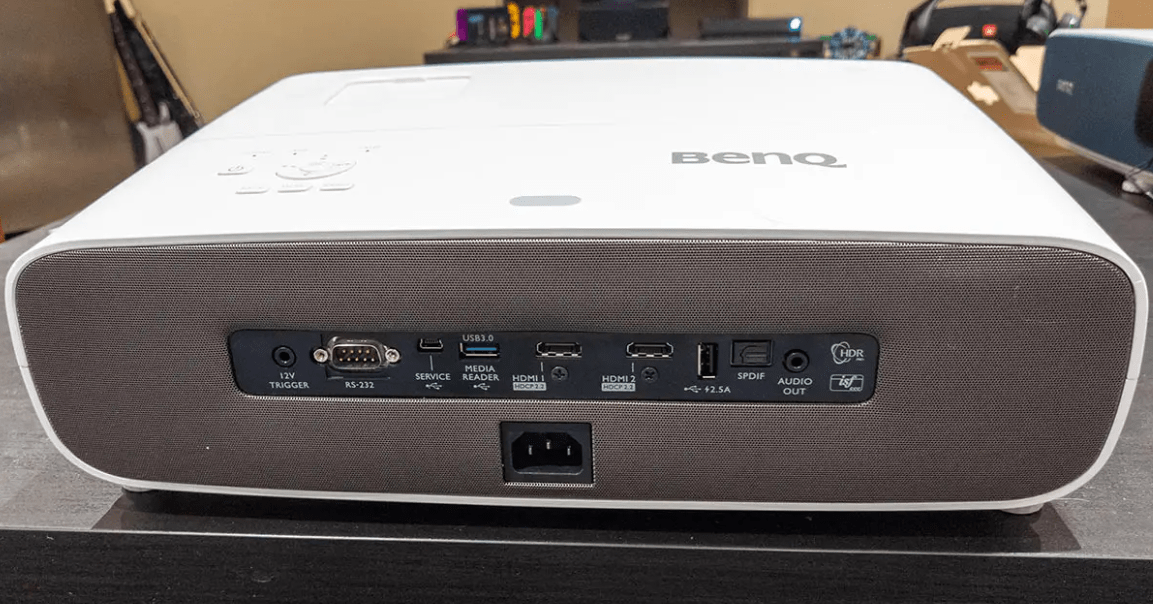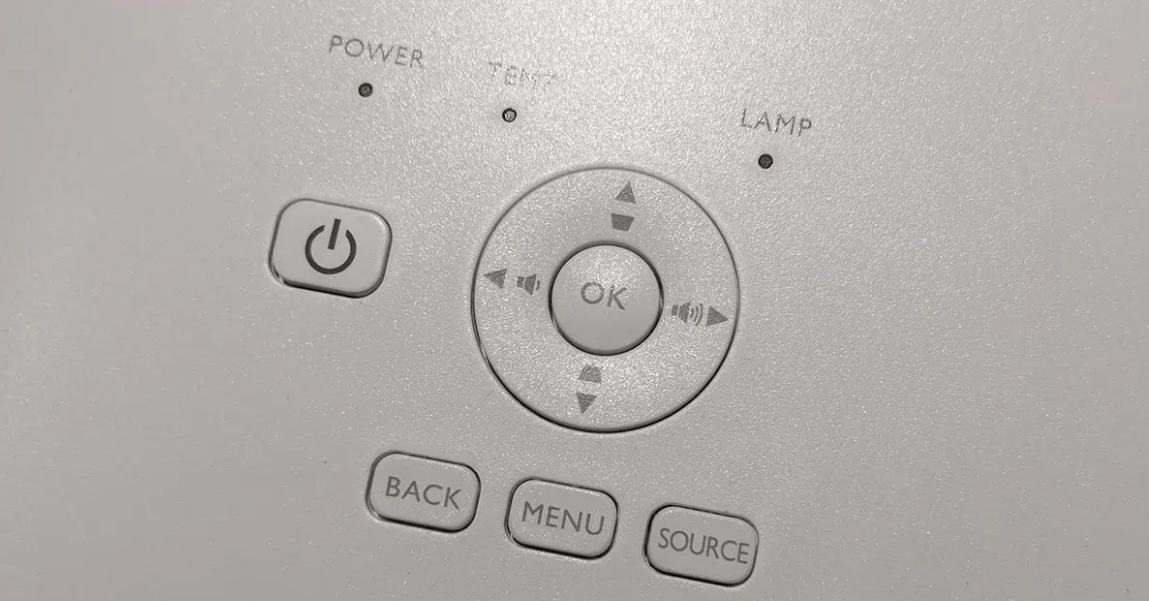Benq TK850i vs Benq HT3550: Comparison
Hey everyone, Jim's here! Today, I'm comparing two popular 4K home theater projectors from BenQ: the TK850i and the HT3550. Both deliver stunning 4K HDR images with wide color gamut support and short throw ratios for large screen sizes in smaller rooms. But they also have some notable differences in brightness, features, and price that could make one a better fit for your specific needs and preferences.
I've spent countless hours testing and calibrating both projectors, evaluating picture quality, HDR performance, ease of use, and overall value. In this in-depth comparison, I'll share my hands-on experience to help you decide which one is the smarter investment for your home theater. Let's dive in!
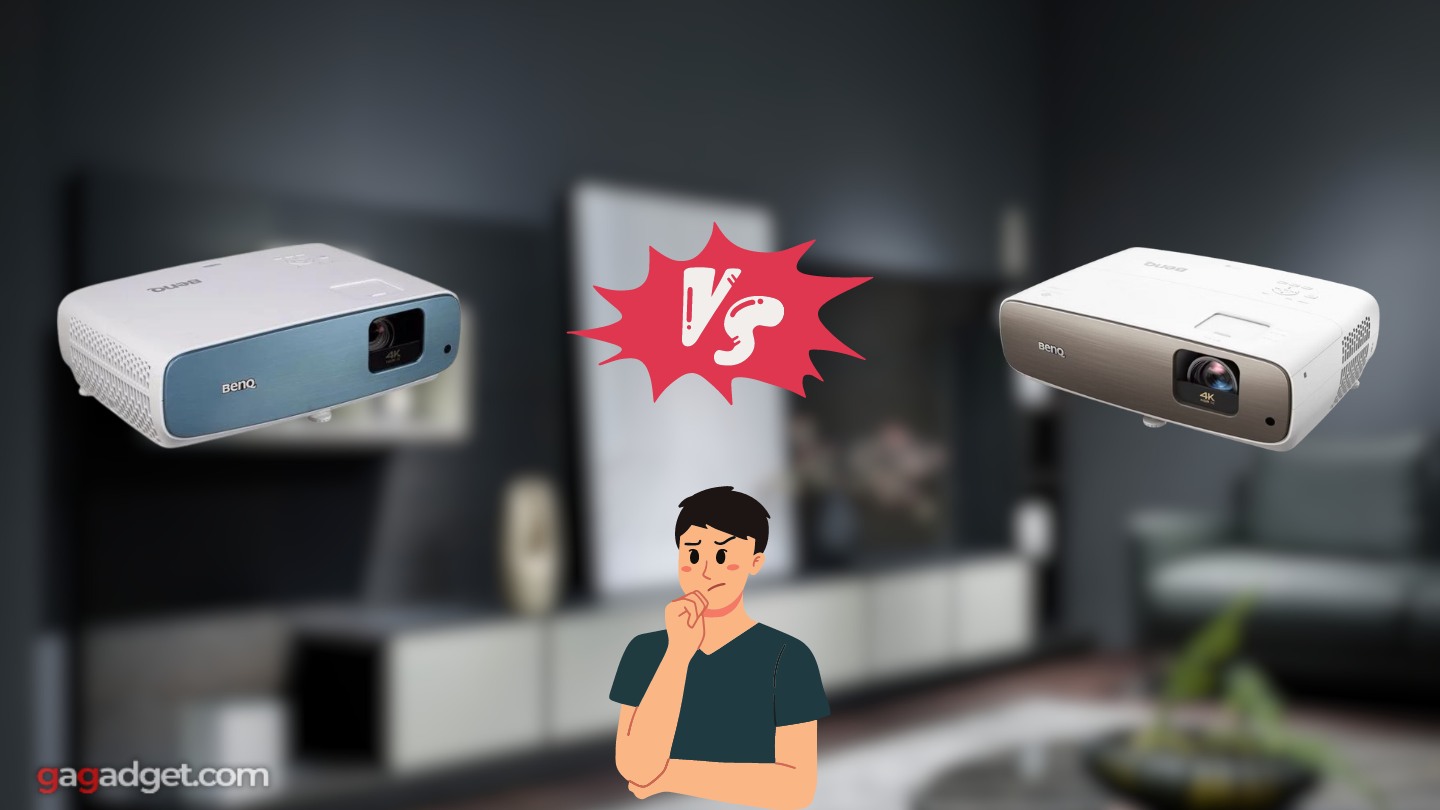
BenQ TK850i vs HT3550: Brief Summary
I respect your time and aim to provide only the essential information, skipping the fluff.
If you're pressed for time, here's my brief overview: The BenQ TK850i is the brighter of the two at 3,000 lumens vs the HT3550's 2,000 lumens. It also includes Android TV streaming capabilities and slightly better input lag for casual gaming. The HT3550 counters with a wider DCI-P3 color gamut (95% vs 98% Rec.709 on the TK850i), 6-segment RGBRGB color wheel for no rainbow effect, and a lower price point.
In my opinion, you should choose the BenQ TK850i if you have a room with some ambient light, want the convenience of built-in streaming apps, or do occasional gaming on the big screen. But if you have a dedicated dark theater room, prioritize the widest color gamut for movies, or have a tighter budget, the BenQ HT3550 is an excellent alternative.
Table of Contents
- BenQ TK850i vs HT3550: Full Comparison
- BenQ HT3550 vs TK850i: Design
- BenQ TK850i or HT3550: Owner Reviews
- BenQ TK850i and HT3550 Alternatives
- Which BenQ 4K Projector is Better, TK850i or HT3550?
BenQ TK850i vs HT3550: Full Comparison
| Specification | BenQ TK850i | BenQ HT3550 |
| Image |
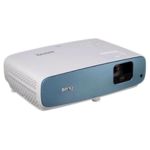
|
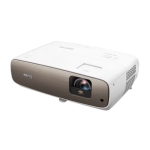
|
| Resolution | 3840 x 2160 (4K UHD) | 3840 x 2160 w/ pixel shifting (4K UHD) |
| Brightness (Lumens) | 3,000 ANSI | 2,000 ANSI |
| Contrast | 30,000:1 dynamic iris | 30,000:1 dynamic iris |
| Display Technology | DLP x1 (0.47" DMD) | DLP x1 (0.47" DMD) |
| Color Processing | 10-bit (1.07 billion) | 10-bit (1.07 billion) |
| Color Gamut | 98% Rec.709 | 100% Rec.709, 95% DCI-P3 |
| Color Wheel | 4 segment (RGBW) | 6 segment (RGBRGB) |
| HDR Support | HDR10, HLG | HDR10, HLG |
| Light Source Life | 4,000 / 15,000 hours (normal / SmartEco) | 4,000 / 15,000 hours (normal / SmartEco) |
| Zoom / Lens Shift | 1.3x manual, vertical +10% | 1.3x manual, vertical +10% |
| Throw Ratio | 1.13 - 1.47:1 | 1.13 - 1.47:1 |
| Max Image Size | 300 inches | 200 inches |
| Input Lag | around 50-80ms | around 50-80ms |
| Integrated Speakers | 2x 5W | 2x 5W |
| Smart Features | Android TV 9.0, Google Assistant, Chromecast | None |
| Dimensions (W x H x D) | 15" x 5" x 10.3" | 15" x 5" x 10.3" |
| Weight | 9.2 lbs | 9.2 lbs |
| Release Year | 2020 | 2019 |
Starting with the core specs, both the BenQ TK850i and HT3550 employ pixel-shifted DLP technology to achieve true 4K UHD resolution. This means they use an advanced 0.47" DMD chip with XPR processing to flash 8.3 million unique pixels on screen. The result is an incredibly sharp, detailed picture that's virtually indistinguishable from native 4K in most content.
The key differentiator is brightness, where the TK850i outshines the HT3550 by a full 1,000 ANSI lumens (3,000 vs 2,000). In practice, this allows the TK850i to maintain a punchier, more vibrant image in rooms with moderate ambient light. It's ideal for mixed-use spaces like living rooms where you can't always control the lighting. The HT3550 is better suited for dedicated dark theater rooms where its 2,000 lumens are plenty.
Both projectors claim an impressive 30,000:1 dynamic contrast ratio thanks to their dynamic iris systems. This allows them to modulate light output on a frame-by-frame or scene-by-scene basis, enhancing perceived contrast and preserving highlight and shadow detail. In my testing, I found the two performed very similarly in this regard, with deep blacks and excellent overall contrast.
Color is another area where these projectors differ. The HT3550 boasts full coverage of the DCI-P3 wide color gamut used in commercial digital cinemas and 4K Blu-rays. It can display 95% of those colors compared to the standard Rec.709 HDTV space. The TK850i is no slouch at 98% Rec.709, but it can't quite match the HT3550's expanded color range, especially in reds and greens.
Part of this is due to the color wheels used in each projector. The HT3550 sports a 6-segment RGBRGB wheel that eliminates any rainbow effect and boosts color saturation. The TK850i uses a 4-segment RGBW wheel that adds a white segment to enhance brightness at the expense of some color purity. Both are 10-bit designs capable of displaying over 1 billion colors.
When it comes to HDR, both projectors support the HDR10 and HLG formats. I was impressed by their tone mapping capabilities, preserving bright highlights and shadow details better than many entry-level projectors. The HT3550's wider color gamut gives it a slight edge in HDR impact and realism, but the TK850i's higher brightness maintains better contrast and punch.
Installation flexibility is similar between the two, with each offering a 1.3x manual zoom and + 10% vertical lens shift. This provides some leeway in placement but you'll still need to be fairly precise. The throw ratios are identical at 1.13 - 1.47, making both great choices for achieving large screen sizes in small to mid-sized rooms. The TK850i maxes out at 300 inches vs the HT3550's 200" but that's more of a theoretical limit.
Both include an auto keystone feature to square up the image if you need to place the projector at an angle. I always recommend avoiding keystone if possible, as it can introduce artifacts and soften the picture. Use the lens shift first, then only engage keystone as a last resort.
Input lag is surprisingly high on both projectors, measuring around 50-80ms depending on the resolution and picture mode. This is fine for casual gaming but won't cut it for competitive fast-paced genres.
The big advantage of the TK850i is its built-in Android TV interface and Google Assistant voice control. This allows you to stream content from Netflix, Prime Video, YouTube, and other apps without any external devices. The interface is snappy and intuitive, and the voice commands work well for quick searches. Chromecast is also supported for mirroring your phone or tablet screen.
By comparison, the HT3550 lacks any smart features. You'll need to connect a streaming stick, box, or game console to access online content. This isn't a huge drawback if you already have a preferred device, but it does add some clutter and complexity to your setup.
A few other notable features: both projectors include dual 5-watt speakers for adequate built-in audio, 10-element all-glass lenses for exceptional sharpness and uniformity, and compact designs weighing just over 9 pounds for easy ceiling mounting or portability. The TK850i adds a USB-A 2.0 port for powering streaming sticks, while the HT3550 offers a slightly longer 5 meter max throw distance.
Ultimately, the choice between the BenQ TK850i vs HT3550 comes down to your specific needs and viewing environment. If you have a living room or mixed-use space and prioritize brightness, streaming convenience, and casual gaming, go with the TK850i. But if you have a dedicated dark theater room and value the widest color gamut for movies, the HT3550 is the purist's choice at a lower price. Both excel at their intended roles and provide stunning 4K HDR images.
BenQ HT3550 vs TK850i: Design
The BenQ TK850i and HT3550 share a nearly identical white chassis with rounded corners and a centered recessed lens. A gray fabric grille covers the bottom half of the front panel, hiding the speakers and intake vents. Basic control buttons for power, input selection, and settings are located on top.
BenQ TK850i Design:
BenQ HT3550 Design:
Both the TK850i and HT3550 models are the same size, 15" x 5" x 10.3", and weigh 9.2 lbs, making them a bit bulky for semi-portable projectors but still manageable for ceiling mounting or shelf placement. They're well-built, feeling sturdy without any give.
I've noticed each model features dials for manual focus and a 1.3x zoom, though the zoom is less than some competitors, it still offers some setup flexibility. Their lens throw ratio is shorter than many 4K projectors, ideal for large images in small spaces.
BenQ TK850i or HT3550: Owner Reviews
No comparison is complete without input from real buyers. Let's see what TK850i and HT3550 owners have to say about their experiences with these projectors:
BenQ TK850i Reviews:
Praises: "The picture quality is absolutely stunning. 4K content looks razor sharp and the colors are so vibrant and lifelike. I'm blown away every time I fire it up."
"Android TV is a game changer. It's so convenient to have all my streaming apps right on the projector. No more messing with external devices or trying to mirror from my phone."
***
Drawbacks: "The fan noise is definitely noticeable in the Normal picture mode. It's not terrible but it can be distracting during quiet scenes. I usually keep it on Eco mode which is much quieter."
"I had to buy a third-party ceiling mount to get the right angle for my screen. The included feet are fine for a table setup but not very flexible. Just something to budget for."
BenQ HT3550 Reviews:
Praises: "The HT3550's color reproduction is simply phenomenal. The wider DCI-P3 gamut makes HDR movies look so rich and nuanced. It's a noticeable step up from standard Rec.709."
"I was worried 2,000 lumens wouldn't be enough for my space but the HT3550 produces a surprisingly bright and punchy image, even with some lights on. The dynamic iris really helps with perceived contrast."
***
Drawbacks: "The lack of any smart features or wireless connectivity is a bit disappointing at this price point. I had to run an extra long HDMI cable to my streaming box which was a pain."
"The short 1.3x zoom and limited lens shift make placement tricky. I had to use keystone correction to get a squared image which I know isn't ideal. Just make sure you measure carefully before buying!"
Owners of both projectors are thrilled with the image quality. I'm impressed by the TK850i's 4K sharpness, vibrant colors, and high brightness, which holds up well even in imperfect rooms. The Android TV integration is a standout feature, offering convenient and smooth streaming.
For the HT3550, reviewers love the expanded DCI-P3 color gamut and excellent contrast, noting its brightness even at 2,000 lumens. It excels in dark room setups, showcasing superior color and black levels.
Common complaints are minor, like higher fan noise for the TK850i and the HT3550's lack of wireless streaming and limited placement options. There's little concern about performance or reliability.
Gaming feedback is scarce since neither projector is ideal for hardcore gamers due to the relatively high input lag. A few mention casual gaming on the TK850i, but it's not a major focus.
Overall, both the BenQ TK850i and HT3550 receive high praise for their image quality, features, and value. The TK850i shines with its brightness and Android TV, while the HT3550 is noted for its color accuracy and lower price. Both are solid choices depending on your needs and priorities.
BenQ TK850i and HT3550 Alternatives
If you're not completely sold on the BenQ TK850i or HT3550, here are a couple alternative 4K projectors to consider:
- Epson Home Cinema 4010: A pixel-shifted 4K projector with 2,400 lumens, motorized lens, 3D support, and excellent out-of-box color accuracy;
- Optoma CinemaX P2: A 4K ultra-short-throw laser projector with a built-in soundbar, 3,000 lumens, and smart features like Alexa/Google voice control.
The Epson 4010 is a strong contender if you value placement flexibility and want similar brightness/color performance to the TK850i without the smart features. It has a wider zoom range, more vertical and horizontal lens shift, and full 3D compatibility. The motorized lens controls are also a nice upgrade from the manual dials on the BenQ models.
For those interested in an ultra-short-throw (UST) projector, the Optoma CinemaX P2 is one of the best values on the market. It can produce a massive 120" image from just inches away and includes an integrated 40-watt soundbar for great audio out of the box. The laser light source is rated for 30,000 hours of maintenance-free use. Just be aware that UST screens can be pricey and the P2 itself costs a bit more than the BenQ long-throw models.
Which BenQ 4K Projector is Better, TK850i or HT3550?
After testing the BenQ TK850i and HT3550, it's clear both are excellent 4K projectors, delivering sharp, vibrant images. Each has unique strengths suited to different setups.
I recommend the TK850i for most home theater enthusiasts. Its 3,000-lumen brightness handles ambient light well, and the built-in Android TV is a major convenience for streaming. It's also slightly better for casual gaming due to faster input lag. The TK850i is ideal for living rooms or multi-purpose spaces, offering a versatile and feature-rich experience. Though pricier than the HT3550, the extra brightness and smart features justify the cost for many.
The HT3550, on the other hand, is perfect for dedicated dark room theaters and cinephiles. Its DCI-P3 color gamut, higher native contrast, and RGBRGB color wheel provide a purer cinematic experience. In a light-controlled room, the HT3550's image quality is hard to beat, delivering colors and details that rival commercial cinemas. Priced around $1,599, it lacks the TK850i's brightness and smart features but excels in picture quality and value for movie enthusiasts.
Both projectors offer stunning 4K sharpness, color depth, and HDR impact. The TK850i caters to a broader audience with its practicality and streaming convenience. The HT3550 appeals to purists seeking the best image quality in a dark environment. Consider your needs and choose accordingly. Whether you opt for the versatile TK850i or the cinematic HT3550, you'll enjoy an immersive 4K experience. If you have any questions or need further guidance, I'm here to help you create the perfect 4K home theater.
Related Articles:

